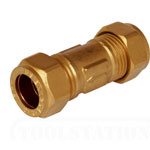Key Variables Of Kitchen Tap Design
Introduction
Fundamentally there are three variables governing the design of taps, details of which are listed below. For a full guide to all tap combinations, use the following link;
The number of faucets from which water flows
All kitchen taps must carry hot and cold water separately, since drinking quality cold water must come from the rising main. The hot water, on the other hand, will usually come from the same hot water cylinder that supplies all the other hot taps in the property.
- Taps can either deliver the hot and cold water from separate faucets, or combine their flow into a single output, or ‘mixer’.
Most mixer taps are ‘dual flow’ and isolate the supplies of hot and cold water, mixing them only when they emerge from the spout. Those that combine the water supplies within the mixer arm (called single flow) must be fitted, according to Water Bylaws, with a single check valve (or non return valve) at each inlet to keep water flowing in a single direction and prevent cross-contamination between supplies.
Several taps also include a spray attachment for rinsing dishes, ranging from discreet ones that are hidden in the tap fixture, to large ones designed to imitate those found in a commercial kitchen.

The number of mounting points
The number of holes that need to be made in the worktop, sink or wall is simply a matter of aesthetics, governed by how closely the supply and any mixer pipes are arranged. If the hot, cold and mixer are closely grouped together all three will usually pass through the worktop via a single hole. This is the most popular arrangement as it is neat and most pre-drilled sinks are manufactured with a single tap hole.
Alternatively, the hot and cold may penetrate the worktop separately, and any mixer may combine the supplies in pipework running above or beneath the worktop, requiring two or three holes, respectively.
The number of flow control valves
Hot and cold water supplies may each have a valve (tap head) for the user to alter their flow independently, or this control may be combined into a single valve which manages both flow and water temperature.
There are several types of valve components currently in use;
- A mechanical valve is the traditional type, using rubber washers to create the seal. They have the disadvantage of being prone to wearing over time, but taps with these valves will be cheapest to buy and rubber washers are easily replaced.
- Ceramic disc valves use ceramic washers to produce a watertight seal which requires low maintenance and is operated and controlled in a just a quarter turn.
- A ceramic disc cartridge is found in single lever mixer taps, using low maintenance ceramic discs that are arranged such that water temperature and flow can easily be controlled with one hand.
Further information and useful links
- Find a Kitchen Sinks & Taps supplier near you
- Find a Plumber near you
- Find a Kitchen Fitter near you
- Find a Kitchen Worktop supplier near you
- Find a Kitchen Fixtures & Fittings supplier near you
Site Pages
Featured Articles





